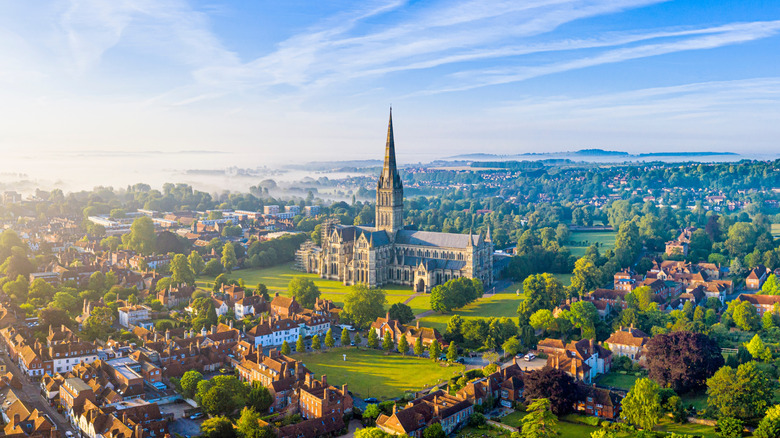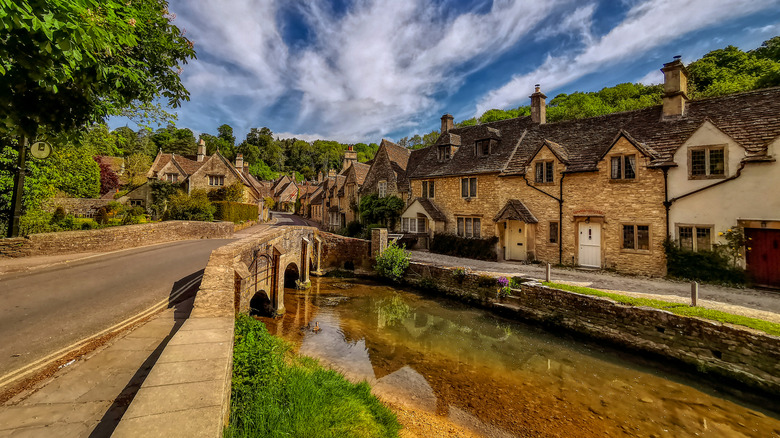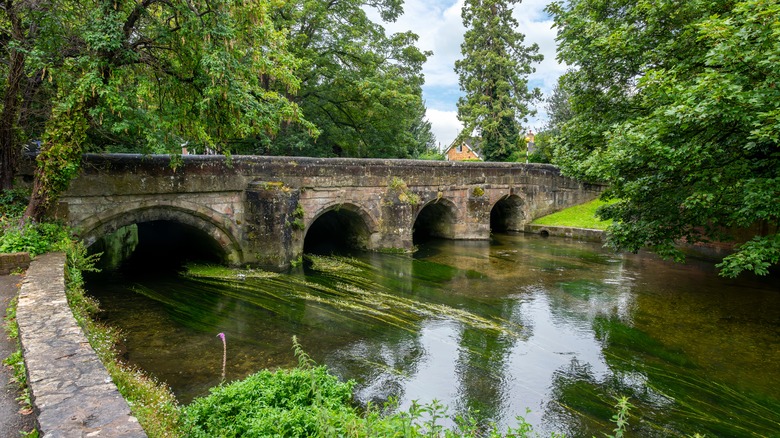The English Countryside's Underrated Stonehenge Gateway Features Medieval Villages And Fairytale Trails
There are certain mysterious places around the globe that leave more questions than answers. Machu Picchu in Peru, Easter Island, the Bermuda Triangle, the Great Pyramids, and, perhaps the most famous of all, Stonehenge. This stone circle made from larger-than-life monoliths has baffled locals, tourists, historians, and scientists for centuries, and remains one of England's must-see sites.
As Stonehenge itself is roped off for preservation reasons, it's a quick visit. Some even say the monument, despite being shrouded in mystery, is one of the world's most disappointing attractions. Perhaps that's because many stop for a day trip and then head back to London, forgetting to delve more into the history of Stonehenge and its surrounding English countryside gems, including one of Stonehenge's gateways, the cathedral city of Salisbury.
Salisbury is ensconced in the idyllic county of Wiltshire, surrounded by quintessential English countryside, full of walking paths, sleepy but beautiful villages, and iconic sights. As it's an easy 1.5-hour train ride from London, Salisbury continues to draw plenty of tourists set on discovering the mysteries of Stonehenge, the misty countryside, the historic cathedral, or the lost-in-time villages.
History and charm in Salisbury
Salisbury is one of the gateways to Stonehenge, but the surrounding county, Wiltshire, also features more Neolithic remains than any other area in England. One of these is at Avebury, a charming hidden village with its own Neolithic monument. This stone circle is just as impressive as Stonehenge, and some would say that it's even better since it's more accessible and less crowded. These mysterious ruins and other local phenomena, like 13 puzzling giant white horses carved into local hillsides, give Salisbury and its environs an undeniably mystical air.
Within Salisbury itself is the famous Salisbury Cathedral, which has been attracting visitors and pilgrims since 1227 or so. It's home to one of the best-preserved of the four remaining copies of the Magna Carta. Wiltshire is also dotted with charming, well-preserved medieval villages, from the famous gold-hued Castle Combe to the timbered buildings of Lacock, which National Geographic once called a "ridiculously pretty place."
Walking in Salisbury
There's perhaps no other country on Earth quite as suited to an idyllic countryside wander as England. Every county has its appeal, like the quintessentially English Cotswold Way, which boasts honey-colored cottages and scenic woodlands. The county of Wiltshire has over 8,200 footpaths — a good many of them near Salisbury — and is ideally suited for a ramble through rural English lands.
Salisbury is also the jumping-off point for several long-distance treks, including the Avon Valley Path, which stretches 34 miles to the sea, and the Clarendon Way, which connects Salisbury to Winchester. Within Salisbury itself, there's the Town Path, which passes the lovely Queen Elizabeth Gardens, or the Old Sarum foot path, which circles the oldest section of Salisbury. You can even follow an ancient path from Salisbury to Stonehenge itself.
To make the most of Salisbury, stay in one of the many classic country house hotels in the city or nearby. The Legacy Rose and Crown Hotel appears much the same as when first established in the 13th century, with a few modern amenities added. Or, sleep like a royal in the Chapter House, rumored to have housed a king and his son in the 17th century.


